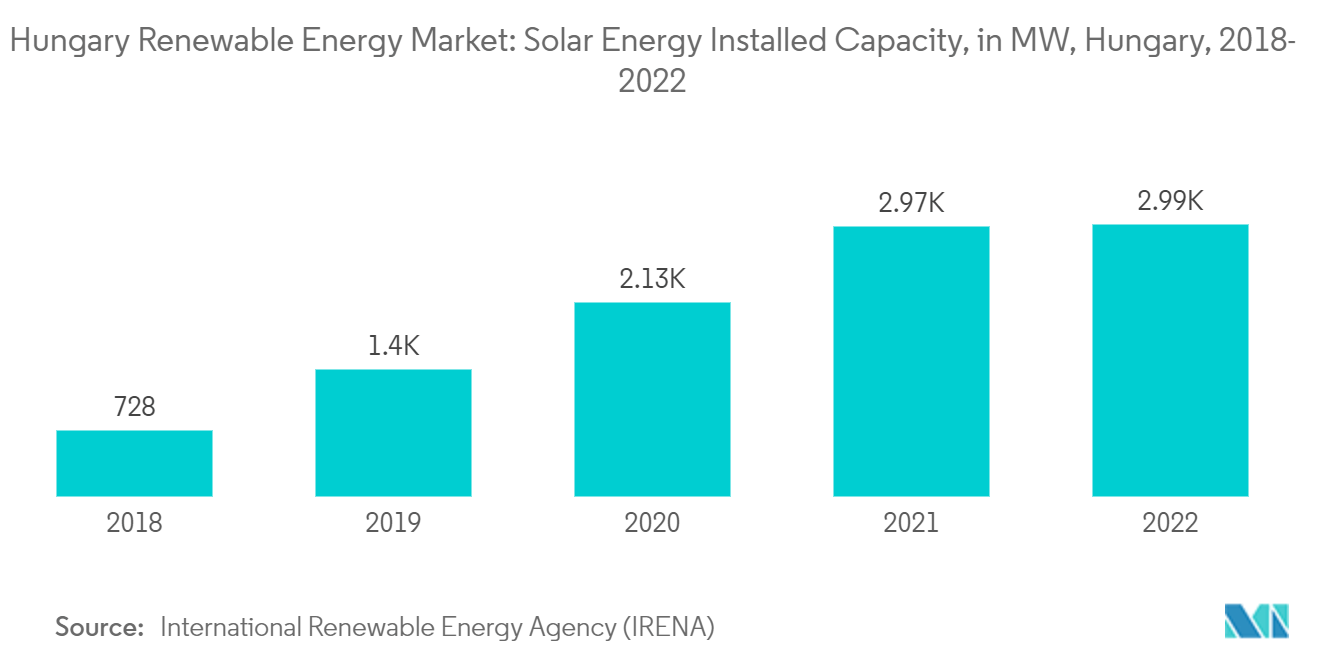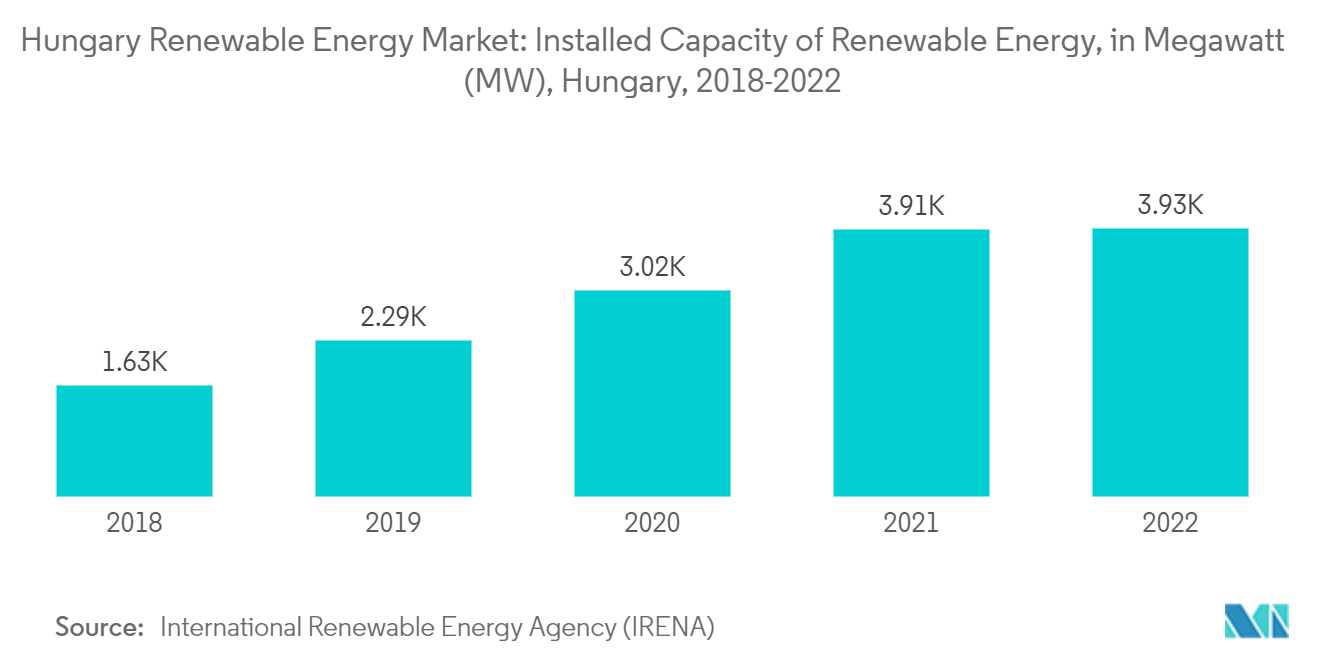Market Trends of Hungary Renewable Energy Industry
Solar Energy Expected to Witness Significant Market Growth
- Hungary has a favorable solar resource potential, with a relatively high solar radiation level. This means the country receives ample sunlight, making it suitable for solar energy generation. The abundance of solar resources creates a strong foundation for the growth of solar energy in Hungary.
- The Hungarian government has implemented various policies and incentives to promote solar energy adoption. These include feed-in tariffs, net metering programs, tax incentives, and grants for solar installations. Such support mechanisms make solar energy more financially attractive and encourage investment in solar projects.
- Moreover, the cost of solar photovoltaic (PV) technology has decreased globally. This cost reduction, technological advancements, and economies of scale have made solar energy increasingly affordable and competitive with conventional energy sources. Lower costs have boosted the attractiveness of solar energy investments in Hungary.
- According to International Renewable Energy Agency, the installed solar capacity in the country has increased significantly in recent years. Between 2018 and 2022, the solar energy installed capacity increased by more than 4 folds. This significant solar energy rise will likely continue during the forecasted period.
- Additionally, like many countries, Hungary aims to enhance its energy security and reduce dependence on imported fossil fuels. Solar energy provides a domestic, decentralized, and renewable energy source, contributing to diversification and reducing reliance on external energy imports.
- For instance, in June 2023, Hungary unveiled its largest interconnected solar power plant in the Municipality of Mezőcsát. With an impressive installed capacity of 250 MW, this solar facility has been established through an investment of USD 262 million. The plant is expected to generate approximately 372 GWh of clean energy annually.
- Considering these factors, solar energy is expected to play a significant role in Hungary's renewable energy market, contributing to the country's energy transition and sustainable development goals during the forecasted period.

Government Supportive Policies and Regulations is Likely to Drive the Market
- The Hungarian government has established a supportive policy framework for renewable energy development. This includes the implementation of feed-in tariffs, tax incentives, grants, and other financial mechanisms to incentivize investments in renewable energy projects. Clear and favorable policies provide stability and predictability for investors, encouraging them to participate in the renewable energy market.
- For instance, in June 2023, according to the Ministry, by the latest summer of 2025, system operators and distribution companies will have the opportunity to seek subsidies for the construction of energy storage facilities. The tender amount of USD 171 million will be open for applications in June 2023, with the selection of winners expected later in the same year. This initiative aims to incentivize the development of energy storage projects, enabling the integration of renewable energy sources and enhancing the stability and efficiency of the energy system.
- Furthermore, Hungary, as a member of the European Union, must meet specific renewable energy targets set at the EU level. The government's commitment to these targets creates a strong impetus for developing and expanding renewable energy sources. Meeting these targets requires significant investments in renewable energy, leading to increased government support and initiatives in the sector.
- For instance, in March 2023, the European Parliament and the Council recently achieved a preliminary agreement to increase the mandatory renewable energy target to a minimum of 42.5% by 2030. This agreement signifies a collective effort to further promote and prioritize renewable energy sources across European Union member states. The revised target reflects a commitment to accelerate the transition towards a greener and more sustainable energy system, considering the urgency of addressing climate change and reducing reliance on fossil fuels.
- As of 2022, Hungary had a total installed renewable capacity of 3,926 MW which showed a growth rate of more than 140% compared to 1630 MW in 2018, signifying the increased adaption of renewable energy in recent years.
- Additionally, the Hungarian government recognizes the importance of energy security and reducing dependence on imported fossil fuels. Renewable energy sources, such as solar, wind, and biomass, provide a diverse domestic energy mix, reducing reliance on external energy sources. This aligns with the government's long-term energy security goals, driving support for renewable energy development.
- Therefore, as mentioned above, supportive government policies are expected to drive the market during the forecasted period.

